IKCO EF engines are a family of four-cylinder engines. The EF7 series are designed jointly by Iran Khodro Powertrain Company (IPCO) and F.E.V GmbH of Germany. The other models will be designed by IPCO itself. IPCO is the powertrain designing & producing company of Iranian car manufacturer Iran Khodro (IKCO). IKCO aims to supply 800,000 powertrains by 2010. The first phase of IKCO EF Engines project (EF7 Dual-Fuel) investments were about 80 million US$. EF4 & EF7 engines use CNG as their main fuel and they can also use gasoline. EFD is the first engine of the EF family that is single-fuel. It uses high-quality diesel (Euro 4 Quality or better) as fuel. EF engines share most of their parts between them. It was IKCO's aim to reduce costs and provide ease of supplying the parts in the future for after-sales services. The EF family dual-fuel and petrol-fuel engines have achieved the Euro IV emission standard and are able to achieve Euro V emission standard with some minor changes but EFD will be the first engine of the family which comes with the Euro IV emission standard as its first release, and is able to achieve the Euro VI emission standard with some changes. The most important suppliers for EF engines are INA for sensitive VVT parts and some other mechanical parts, MAHLE which supplies some important parts of the engine family such as pistons, with Bosch supplying the ECU and electrically controlled pedal and lots of other important sensitive electronic parts. Almost all of the parts (except high-tech and sensitive parts) from worldwide well-known companies (as mentioned) are produced in Iran under license with the highest required quality for the engines. The Germany company Bosch had shown interest in assembling the Iranian engine under license. In 2008 IKCO has announced that EF7 is among the three best CNG-based engines of the world in designing.
- dual-fuel
- f.e.v
- mechanical
1. EF7
The engine general structure is similar to the PSA Group's Peugeot TU5JP4. It has displacement of 1648 cc with a bore of 78.560 mm and a stroke of 85 mm. This engine was introduced as EF7 dual-fuel in 2008 at Engine Expo Stuttgart, Germany ,.[1] It is a 16-valve engine incorporating CVVT technology on its intake valves (IPS type).
It features an advanced cooling system (both lubrication and liquid-cooling) compared to the PSA TU5JP4. The EF7 has a direct-drive oil pump.[2] The water pump, oil pump and oil coolant system are integrated in one place to reduce removal of parts for maintenance compared to other engines. Other parts are re-engineered to provide ease in changing the oil filter.
The engines will use a Three way Catalytic Converter to reach higher emission standards.[2]
All the EF7 variants have passed the NVH tests successfully on their head cylinder & cylinder block.[2] Also, the engines have a Blow-by system which does ventilation for the Crankcase and Oil Pan.[2]
The EF7 assembly line is in Tehran, Iran.
1.1. EF7 Dual-Fuel
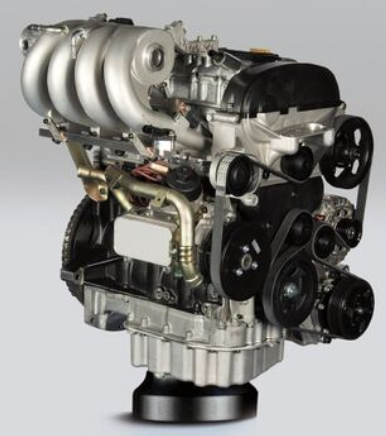
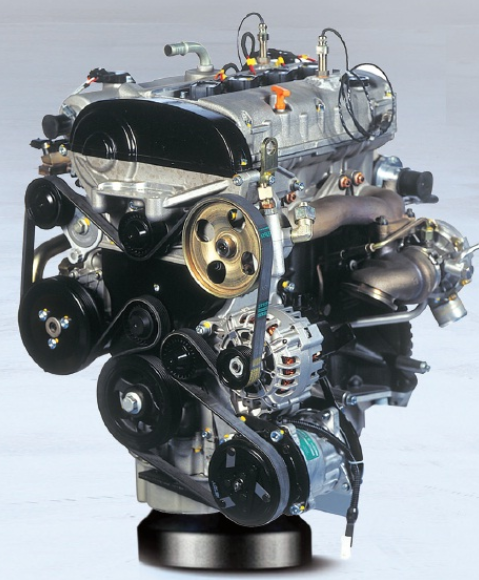
Reaches maximum power at 6000 rpm and the maximum the torque at 3250 rpm in both CNG and petrol using conditions.
IKCO has indicated an engine timing belt change interval of 180,000 Km. IKCO states if the engine runs only on CNG it will not need any special maintenance until 250,000 km(average)[3] and if the engine runs with both CNG and gasoline the number will increase to more than 250,000 km.
Due to lack of possibility and so many requests for single-fuel Samand with EF7 engine and lack of readying the EF7 Petrol-Based engine, In late 2009 IKCO wanted IP-CO to start a project for removing CNG-necessary parts of the engine. So the project done in about 3 months and tests completed in 2nd quarter of 2010. In this version of engine, only ECU Program is changed & CNG functions are disabled; This ECU program supports immobiliser too. Currently, consumers are able to purchase Samand EF7 single-fuel.
In September 2010, IKCO announced the design and production of a modified EF7 engine with reduced fuel consumption & air pollution.[4] The engine is mobilized with Direct Injection technology for both petrol & CNG.
As the IPCO president says after the new engine is produced, IKCO will be the first manufacturer in the world using the Direct Injection technology for CNG engines.[4]
Technical details
- ECU: Bosch ME 7.4.9NG
- Coil ignition: Bosch P-50[5]
- Spark plugs: Bosch FR8DE+
- Gasoline Fuel Injectors: Bosch [6]
- CNG Fuel Injectors: Benteler[6]
- CNG Fuel Rail: Benteler[6]
- Gasoline Fuel Rail: Benteler[6]
- Upstream Oxygen Sensor: Bosch[6]
- Downstream Oxygen Sensor: Bosch[6]
- TMAP Sensor: Bosch[6]
- Accelerator Pedal: Bosch[6]
- ETC: Bosch [6]
- Recommended Fuel: Normal CNG & Unleaded Gasoline RON 95
- Recommended Engine Lubricant: Total Quartz 7000 Semi-Synthetic (10W-40 SL) or Behran Super Pishtaz Semi-Synthetic (10W-40 SL)
- Timing Belt: INA [7]
- Alternator Belt: INA[7]
- Idlers Pulleys: INA[7]
- HLA Tappets: INA[7]
- Check Valve: INA[7]
- Automatic Tensioner: INA[7]
- CVVT Mechanism Parts: INA[7]
- CVVT Control Valve: INA[7]
- IPS Tensioner Valve: INA[7]
- CVVT Closing Plug: INA[7]
- Steel Pulley: INA[7]
- Intake Valves: TBD
- Exhaust Valves: TBD
- Engine Starter: Valeo[8]
- Engine Alternator: Valeo[8]
- Flywheel: TBD
- Clutch Kit: Valeo [8]
- Pistons: MAHLE[9]
- Cylinder head: Continental Engine Ltd[10]
- Intake Manifold: Continental Engine Ltd[10]
- Engine Housings: Tara Zob Company [11]
- Engine Mounters: TBD
- Weight: 140 kg
Parts image gallery
-
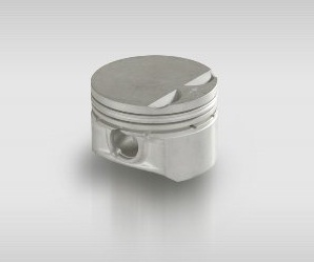
EF7 Dual-Fuel engine piston[9] https://handwiki.org/wiki/index.php?curid=1975969 -
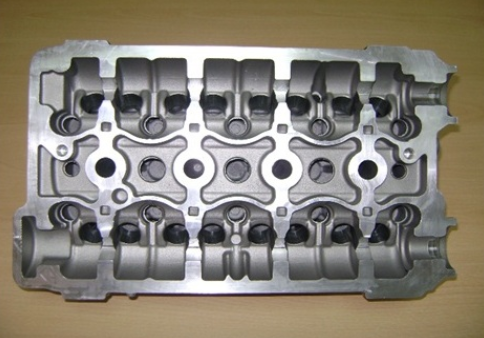
EF7 Cylinder head[10]. (Another view). https://handwiki.org/wiki/index.php?curid=1592607 -
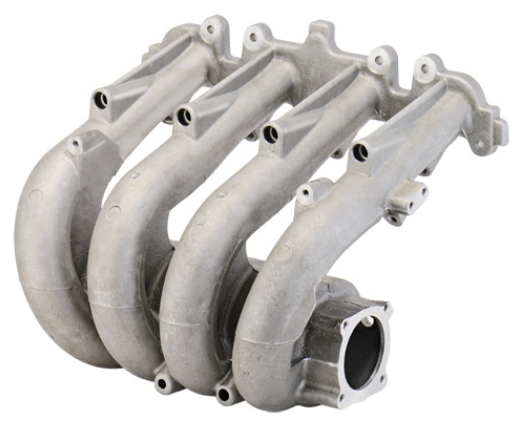
EF7 Intake Manifold[10]. https://handwiki.org/wiki/index.php?curid=1079271
1.2. EF7 Turbocharged
A new variant of the EF7 family was introduced in 2009 with a turbocharger. It will be initially installed on Soren ELX and Dena is named EF7TC.
To resist the high temperature of the engine combustion there will be about 35 kg of nickel used in the cylinder block alloy.[2]
In addition, a new lubricant will produce for the engine by the Company, Behran Oil.
IP-Co has estimated the engine's life cycle to be around 10 years.[12]
1.3. EF7 Petrol Based
In an interview[13] with one of the EF7 project managers, the manager confirmed the rumors of coming a new EF7 engine.
The project of the new engine is currently on its first phases and at the end, there will be an EF7 fully compatible with gasoline.
The new engine will name EF7NE(maybe the name changes in the future) and will have many changes compared to the EF7 dual-fuel engine. Some of the changes will be: Reducing the engine compression ratio from 11:1 to 10.5:1, replacing parts that are resistant & compatible to high temperature of combustion of CNG with parts with weaker resistance to reduce production costs(New parts are fully compatible with the temperature rising from combustion of petrol) and some other changes
In addition, EF7NE will use a newer ECU program and functions
Another changed part of the engine compared to his father EF7, will be the catalytic converter. The change is due to making the engine to petrol-based and there is no need to use a CNG-compatible catalytic converter for the engine.
The engine output is estimated to be between 118 PS (87 kW)-126 PS (93 kW). It depends on the company strategy, decisions & plans.
It is expected that the engine will be shown to the public in mid 2011.
1.4. Performance
| Variant | Power | Torque | Production since | Utilization on | Compression Ratio | FC(Urban) | FC(Combined) | FC(Extra Urban) | Notes |
|---|---|---|---|---|---|---|---|---|---|
| EF7 | 114 PS (84 kW) CNG: 103 PS (76 kW) at 6000 rpm |
155 N⋅m (114 lb⋅ft) CNG: 136 N⋅m (100 lb⋅ft) 3500-4500 rpm |
Early 2009 | Samand LX Soren ELX IKCO Dena IKCO Dena Plus |
11:1 | 8.9 L, 7Kg* | 6.9 L, 6.1 kg | 4.9 L [14] 3.9 kg |
16-valve, DOHC, HLA Tappets, CVVT, MPFI, Catalytic converter |
| EF7TC | 149 PS (110 kW) at 5500 rpm |
215 N⋅m (159 lb⋅ft) 2200-4800 rpm |
Late 2010 | Soren ELX IKCO Dena Plus |
9.8:1 | TBD | 7.2 L[15] | TBD | 16-valve, DOHC, HLA Tappets, CVVT, MPFI, Turbocharger, Catalytic converter |
- *Kg for CNG fuel
2. EF4
EF4 has displacement of 1397 cc with a bore of TBD mm and a stroke of TBD mm. The engine introduced to public in 2009 in Iran. It uses the EF7 cylinder head.
The engine reaches maximum power at 6000 rpm and the maximum torque at 3250 rpm for both CNG and petrol.
It shares almost all of its technologies with the big brother, EF7.
The EF4 assembly line will be in Esfahan, Iran.
2.1. Performance
| Variant | Power | Torque | Production since | Utilization on | Compression Ratio | FC(Urban) | FC(Combined) | FC(Extra Urban) | Notes |
|---|---|---|---|---|---|---|---|---|---|
| EF4 | 95 PS (70 kW) CNG: 84 PS (62 kW) |
125 N⋅m (92 lb⋅ft) CNG: 111 N⋅m (82 lb⋅ft) 3500-4500 rpm |
Early 2011[16] | IKCO Runna | 11:1 | 8.4 L, 6.5 kg | 6.4 L, 5.6 kg | 4.7 L, 3.7 kg | 16-valve, DOHC, HLA Tappets, CVVT, MPFI, Catalytic converter |
3. EFD Engines
EFD diesel engines have a displacement of 1497 cc with a bore of 76 mm and a stroke of 82.5 mm.
It's a 16-valve engine featuring lots of new diesel engines technologies.[17]
Because EFD engines are the first engines from the family which are using a different fuel, this makes a necessity for changing most parts which means there are just some parts of other EF family engines used in them.
Since the initial talks about the project in mid 2008, NIOPDC was the main sponsor of the project (EFD)[17][18] and has supported the project up to 20 million US$.[19]
Because Iran Khodro had never designed a diesel engine before the EFD engines and the company wanted to design diesel engines with the properties of being modern, technological and comparable with other new diesel engines in their range, Iran Khodro made a partnership in designing the engines & consulted with AVL in many aspects for gaining the new required technologies to reach to the goals.[19]
IP-Co says production of the non-Turbocharged EFD engine costs about 1.7 times more than other EF family engines; but if a customer buys a car using the engine, after not a long time, these costs will be paid back to the consumers due to less fuel consumption and less maintenance needs.[18]
Due to being old and inefficiencies of the Peugeot BE3/5 gearbox and also a necessity for having a new gearbox for other IKCO engines, the company started to design a new gearbox which can be used for the EFD engines.The gearbox will overcome the high torques and will have more efficiency compared to the BE3/5 gearbox.
On November 30, 2010, IKCO announced they will finalize the gear ratios of the new gearbox for EFD in the near future.[20]
Here are IP-Co reasons for starting the design of a diesel engine (EFD engines):
- Respond to new territory's fuel policies & changing the domestic fuel basket from Petrol and CNG to Petrol, CNG and Diesel
- Owning an efficient diesel powertrain which is on the knowledge edges of sufficiency, fuel consumption and pollution
- Making the Diesel engines technologies native in Iran
- Using the maximum R & D knowledge of combustion engines which are gained from designing other engines
- Designing the engines based on the EF family engines to reduce costs of developing and investments
These are some of the technologies that are used in implementation of EFD engines:
- direct injection
- Common Rail with the pressure of 1,600 bars (23,210 psi)
- Glow plug
- Variable geometry turbocharger
- Intercooler
- Exhaust gas recirculation with cooler to increase pollution standards
- Having Euro IV Emission Standard
- Diesel Particulate Filter to remove diesel soots and particulates from exhaust gas
- Diesel Oxidation Catalyst to increase emission standard by breaking down pollutants of exhaust gas into less harmless elements.
3.1. EFD
It is the first variant of the EFD family, which unveiled on November 17, 2009 by the president of Iran Mahmoud Ahmadinejad in Amol and mobilized with mentioned technologies listed above.
The engine reaches its maximum power at 4000 rpm and maximum torque at 1750 rpm.
It is currently installed on some Samands and Sorens to pass the last required tests.
Other specifications are listed in the Performance section below.
3.2. EFD Turbocharged
It will be a double-stage Turbocharged engine.
IP-Co has no plan to develop it until its brother, EFD comes to the market but it is noticeable that the project is near to be finished.
3.3. Performance
| Variant | Power | Torque | Production since | Utilization on | Compression Ratio | Maximum Combustion Chamber Pressure | Redline | Max rpm | FC(Urban) | FC(Combined) | FC(Extra Urban) | Notes |
|---|---|---|---|---|---|---|---|---|---|---|---|---|
| EFD | 122 PS (90 kW) @ 4000 rpm | 256 N⋅m (189 lb⋅ft) @ 1750 rpm | Late 2011 | Samand Soren |
16.5:1 | 165 bar | 4500 rpm | 5500 rpm | TBD | 5 L | TBD | 16-valve, DOHC, HLA Tappets, Direct Injection, Common Rail, Turbodiesel, VGT, InterCooler, Glow Plug, EGR, DPF, DOC |
| EFD TC | 149 PS (110 kW) @ TBD rpm | 300 N⋅m (221 lb⋅ft) @ TBD rpm | TBD | TBD | TBD | TBD | TBD rpm | TBD rpm | TBD | TBD | TBD | 16-valve, DOHC, HLA Tappets, Direct Injection, Common Rail, 2 x Turbodiesel, VGT, InterCooler, Glow Plug, EGR, DPF, DOC |
The content is sourced from: https://handwiki.org/wiki/Engineering:IKCO_EF_Engines
References
- "IKCO". Ikcopress.com. 2010-01-06. http://www.ikcopress.com/EN/News.aspx?docID=10611. Retrieved 2010-12-01.
- [1] Template:Fa icon
- Khabar Khodro (Persian) http://www.khabarkhodro.com/detail.asp?id=85944
- [2] (Persian)
- "Bosch Motorsport" (PDF). http://www.bosch-motorsport.com/pdf/components/ignition_coils/Single_P50_P50_M.pdf. Retrieved 2010-12-01.
- "EMS engine part series". Sazehpouyesh.com. http://www.sazehpouyesh.com/Pages/HeavyProducts.aspx. Retrieved 2010-12-01.
- "Iranian National Engine (EF7)". Valapart.com. http://www.valapart.com/Pages/Product3.aspx. Retrieved 2010-12-01.
- "Product list". Stam-sanat.com. http://www.stam-sanat.com/Pages/LightProduct.aspx. Retrieved 2010-12-01.
- [3]
- "Continental Engines Limited". Baxy.com. http://www.baxy.com. Retrieved 2010-12-01.
- "Tara Zob". Tzmco.com. http://www.tzmco.com/Pages/LightProduct.aspx. Retrieved 2010-12-01.
- CarNP (Persian) http://www.carnp.com/newsdetail-fa-1267.html
- PHalls (Persian) http://www.phalls.com/showthread.php?t=57642
- "FarsNews". FarsNews. 2009-12-21. http://english.farsnews.com/newstext.php?nn=8809301242. Retrieved 2010-12-01.
- "IKCO". Ikcopress.com. 2009-11-17. http://www.ikcopress.com/EN/News.aspx?docID=10273. Retrieved 2010-12-01.
- "IKCO". News.ikco.com. http://news.ikco.com/EN/News.aspx?docID=11974. Retrieved 2010-12-01.
- [4] Template:Fa icon
- [5](Persian)
- "بازگشت بهخودروهای سواری دیزلی". Hamshahrionline.ir. http://www.hamshahrionline.ir/print-96467.aspx. Retrieved 2010-12-01.
- IKCO (Persian) http://www.ikcopress.com/FA/News.aspx?docID=12406
